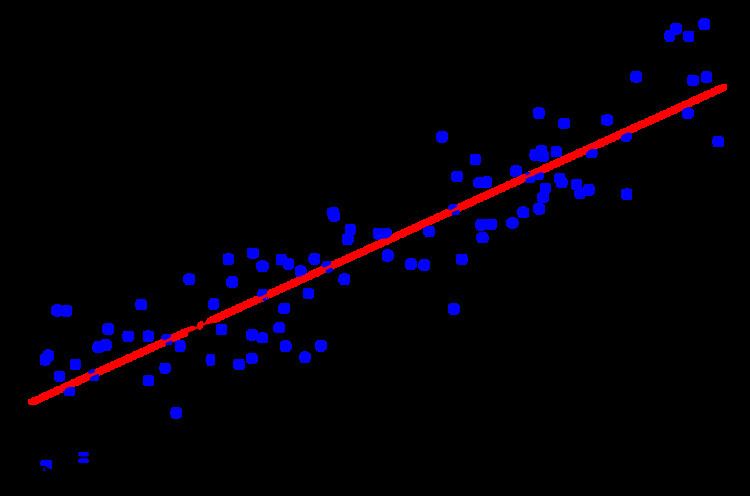 | ||
In statistics, a fixed effects model is a statistical model that represents the observed quantities in terms of explanatory variables that are treated as if the quantities were non-random. This is in contrast to random effects models and mixed models in which either all or some of the explanatory variables are treated as if they arise from random causes. Contrast this to the biostatistics definitions, as biostatisticians use "fixed" and "random" effects to respectively refer to the population-average and subject-specific effects (and where the latter are generally assumed to be unknown, latent variables). Often the same structure of model, which is usually a linear regression model, can be treated as any of the three types depending on the analyst's viewpoint, although there may be a natural choice in any given situation.
Contents
- Qualitative description
- Formal description
- Equality of Fixed Effects FE and First Differences FD estimators when T2
- HausmanTaylor method
- Testing fixed effects FE vs random effects RE
- Steps in Fixed Effects Model for sample data
- References
In panel data analysis, the term fixed effects estimator (also known as the within estimator) is used to refer to an estimator for the coefficients in the regression model. If we assume fixed effects, we impose time independent effects for each entity that are possibly correlated with the regressors.
Qualitative description
Such models assist in controlling for unobserved heterogeneity when this heterogeneity is constant over time. This constant can be removed from the data through differencing, for example by taking a first difference which will remove any time invariant components of the model.
There are two common assumptions made about the individual specific effect, the random effects assumption and the fixed effects assumption. The random effects assumption (made in a random effects model) is that the individual specific effects are uncorrelated with the independent variables. The fixed effect assumption is that the individual specific effect is correlated with the independent variables. If the random effects assumption holds, the random effects model is more efficient than the fixed effects model. However, if this assumption does not hold, the random effects model is not consistent. The Durbin–Wu–Hausman test is often used to discriminate between the fixed and the random effects model.
Formal description
Consider the linear unobserved effects model for
where
Unlike the random effects (RE) model where the unobserved
Since
where
At least three alternatives to the within transformation exist with variations. One is to add a dummy variable for each individual
Equality of Fixed Effects (FE) and First Differences (FD) estimators when T=2
For the special two period case (
Since each
Hausman–Taylor method
Need to have more than one time-variant regressor (
Partition the
Estimating
Testing fixed effects (FE) vs. random effects (RE)
We can test whether a fixed or random effects model is appropriate using a Durbin–Wu–Hausman test.
If
The Hausman test is a specification test so a large test statistic might be indication that there might be errors-in-variables (EIV) or our model is misspecified. If the FE assumption is true, we should find that
A simple heuristic is that if
Steps in Fixed Effects Model for sample data
- Calculate group and grand means
- Calculate k=number of groups, n=number of observations per group, N=total number of observations (k x n)
- Calculate SS-total (or total variance) as: (Each score - Grand mean)^2 then summed
- Calculate SS-treat (or treatment effect) as: (Each group mean- Grand mean)^2 then summed x n
- Calculate SS-error (or error effect) as (Each score - Its group mean)^2 then summed
- Calculate df-total: N-1, df-treat: k-1 and df-error k(n-1)
- Calculate Mean Square MS-treat: SS-treat/df-treat, then MS-error: SS-error/df-error
- Calculate obtained f value: MS-treat/MS-error
- Use F-table or probability function, to look up critical f value with a certain significance level
- Conclude as to whether treatment effect significantly affects the variable of interest
